Did you know that nearly 70 percent of people say making art helps reduce their stress? Creative activities like painting, drawing, or collage not only spark imagination but also deliver genuine joy and calm in daily life. Whether you are curious about watercolor, acrylics, or embroidery, even simple projects can transform your home and mindset. Discover how approachable techniques allow anyone to turn ordinary materials into extraordinary works of art.
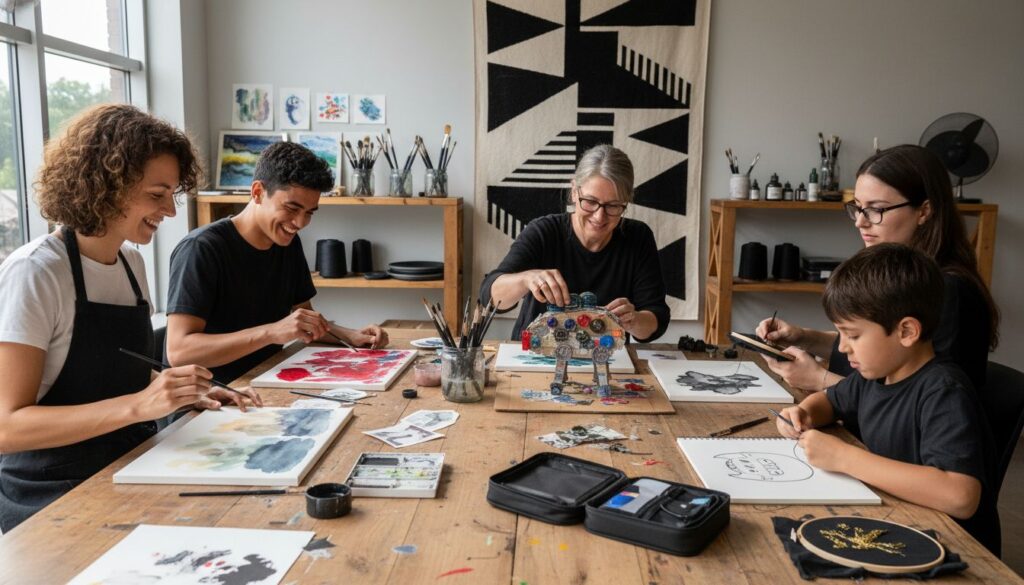
Table of Contents
- 1. Start With Simple Watercolor Techniques
- 2. Create Abstract Art Using Acrylics
- 3. Try Diy Collage With Recycled Materials
- 4. Experiment With Basic Drawing Exercises
- 5. Make Your Own Stenciled Wall Art
- 6. Learn Easy Embroidery For Artwork
- 7. Paint Mini Canvases For Home Decor
Quick Summary
| Takeaway | Explanation |
|---|---|
| 1. Master fundamental watercolor techniques | Learn wet on wet and wet on dry methods to control color flow and edges. |
| 2. Embrace abstract creation with acrylics | Use fast-drying acrylics to layer colors and express emotions without restrictions. |
| 3. Use recycled materials for collage art | Transform everyday items into meaningful art pieces while promoting sustainability. |
| 4. Practice fundamental drawing exercises daily | Regularly draw shapes and engage in exercises to improve skills and muscle memory. |
| 5. Create personal art with mini canvases | Small canvases are perfect for experimenting with design and enhancing personal spaces. |
1. Start with Simple Watercolor Techniques
Watercolor painting offers beginners a magical world of fluid expression and vibrant creativity. Your artistic journey begins with mastering some fundamental techniques that will transform blank paper into breathtaking landscapes, portraits, and abstract compositions.
The wet on wet technique is your gateway to understanding watercolor’s enchanting properties. By applying wet paint onto an already wet surface, you create soft blended edges and dreamy color transitions. Imagine dropping a vibrant blue onto a moistened paper and watching it spread like liquid silk. This technique allows colors to merge and flow organically, perfect for painting skies, water scenes, or creating ethereal backgrounds.

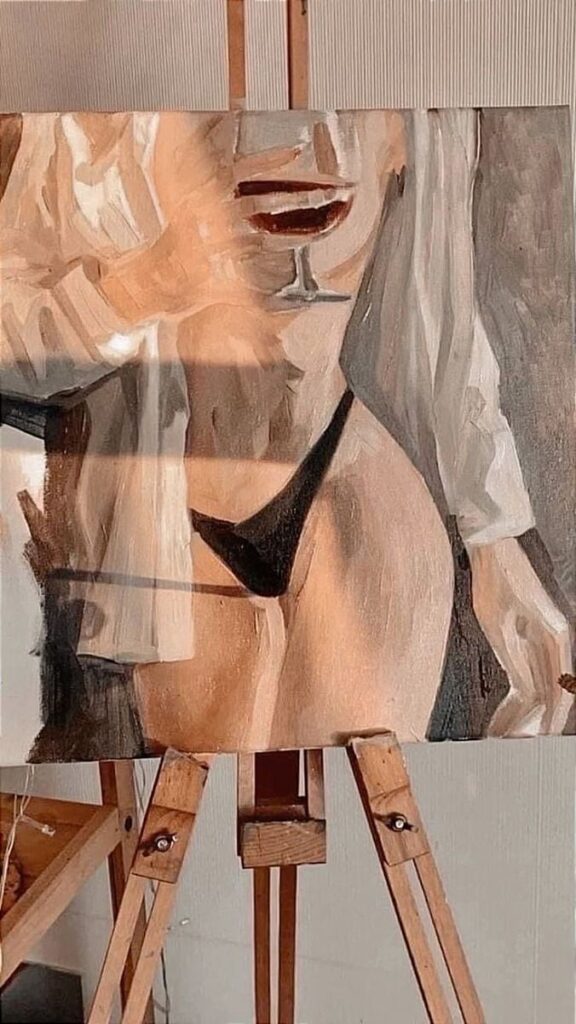
Next, explore the wet on dry method where you apply wet paint onto a dry paper surface. This technique gives you more control and sharper edges ideal for detailed elements like architecture, botanical illustrations, or precise color blocks. According to watercolor tutorial, practicing these foundational techniques helps artists develop precision and understanding of paint behavior.
To add texture and visual interest, experiment with techniques like dry brush where you use a brush with minimal water to create rough, textured strokes. This method works wonderfully for creating rocky surfaces, tree bark, or adding intricate details to your artwork.
Key tips for watercolor success include:
- Use high quality watercolor paper
- Start with student grade paints
- Keep your brushes clean
- Allow layers to dry completely
- Embrace happy accidents
Remember that watercolor is about flow and spontaneity. Do not aim for perfection but enjoy the beautiful unpredictability of each brushstroke.
2. Create Abstract Art Using Acrylics
Abstract art liberates your creativity from traditional representational constraints, allowing pure emotion and spontaneity to flow through your paintbrush. Acrylics provide the perfect medium for beginners to explore this liberating artistic approach with their fast drying time and vibrant pigmentation.


Acrylic painting offers remarkable versatility for abstract art enthusiasts. Unlike other mediums, acrylics dry quickly allowing you to layer colors rapidly and build complex textural compositions. This means you can experiment without waiting hours between creative interventions. Learn how to artistic inspiration can transform your abstract approach.
To begin your abstract acrylic journey, focus on understanding color theory and emotional expression. Choose a color palette that resonates with your current mood or aesthetic vision. Warm colors like reds and oranges communicate energy while cool blues and greens suggest tranquility. Do not overthink your composition let intuition guide your brushstrokes.
Techniques to explore in abstract acrylic art include:
- Drip painting
- Palette knife texturing
- Layering translucent washes
- Creating geometric color blocks
- Using unconventional painting tools
Practical tips for success involve embracing imperfection. Abstract art celebrates spontaneity so release expectations of photorealistic precision. Experiment with different brush sizes, unconventional tools like sponges or cardboard edges, and allow unexpected color interactions to emerge naturally.
Remember that abstract art is about expressing inner emotions and experiences beyond literal representation. Your canvas becomes a playground where color, texture, and movement communicate feelings words cannot capture.
3. Try DIY Collage with Recycled Materials
Transform your artistic vision and environmental consciousness into a vibrant creative adventure through DIY collage using recycled materials. This project turns everyday discarded items into extraordinary art pieces that tell unique stories while reducing waste.
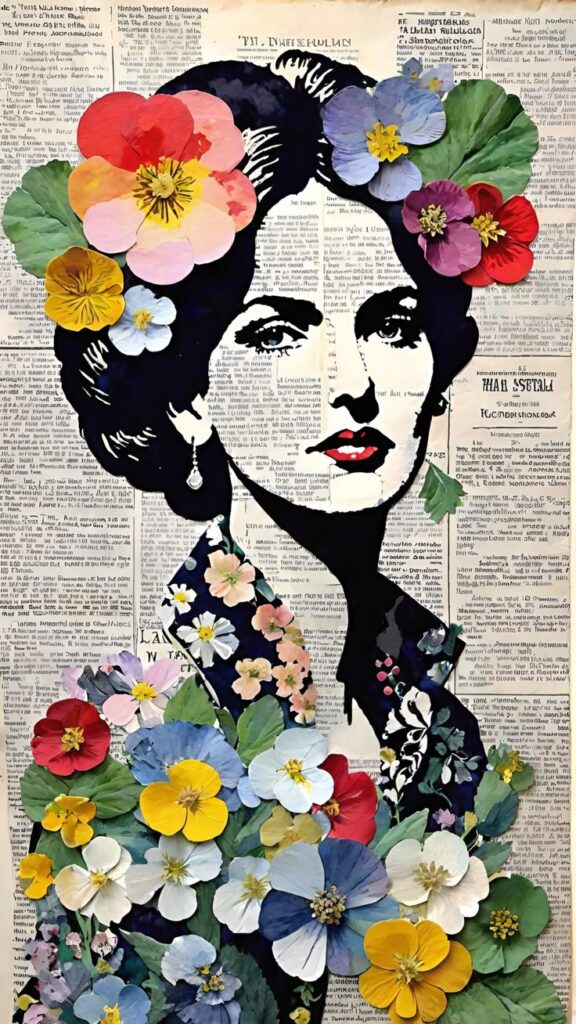

Collage art provides an accessible entry point for beginners to explore creativity without requiring advanced technical skills. Magazines, newspapers, packaging materials, fabric scraps, and even old tickets become your artistic palette. When exploring DIY home decor ideas, collage emerges as a powerful technique for personal expression.
Gathering materials becomes an exciting treasure hunt. Look around your home for potential artistic elements paper with interesting textures, colorful advertisements, vintage book pages, or discarded wrapping paper. Old maps, sheet music, and printed ephemera can add nostalgic depth to your artwork.
Basic supplies you will need include:
- Sharp scissors
- Glue stick or liquid adhesive
- Sturdy backing board
- Cutting mat
- Ruler
Start with a simple composition by arranging materials before gluing. Experiment with layering techniques creating depth through overlapping elements. Play with color harmony selecting materials that complement each other. Do not worry about perfection abstract arrangements often produce the most compelling visual narratives.
Techniques to explore include tearing instead of cutting for softer edges, creating texture through intentional wrinkles, and using negative space strategically. Your collage can become a powerful medium for personal storytelling mixing visual elements that represent your emotions experiences and imagination.
4. Experiment with Basic Drawing Exercises
Drawing is the foundational skill that transforms imagination into visual reality. Whether you dream of creating stunning landscapes or capturing intricate portraits, mastering basic drawing exercises will unlock your artistic potential.


Fundamental drawing techniques are your gateway to artistic expression. When beginning your creative journey, focus on developing muscle memory and hand eye coordination through simple yet powerful exercises. Check out our drawing tips for beginners to jumpstart your artistic skills.
Start with shape studies which form the building blocks of complex drawings. Practice drawing basic geometric shapes like circles, squares, triangles and rectangles. These seemingly simple forms teach you about proportion, perspective and spatial relationships. Try drawing these shapes from different angles to understand how they transform and interact in three dimensional space.
Essential drawing exercises include:
- Continuous line drawing
- Gesture sketching
- Blind contour drawing
- Negative space exploration
- Perspective grid practice
Use a soft pencil and dedicated sketchbook for these exercises. Do not judge your initial attempts focus on observation and consistent practice. Embrace imperfection as each sketch brings you closer to artistic mastery. Remember that drawing is a skill developed through patient repetition not overnight talent.
Pro tip for beginners: spend at least 15 minutes daily practicing these fundamental exercises. Consistency matters more than perfection. Train your hand to translate what your eyes see onto paper transforming blank pages into windows of imagination.
5. Make Your Own Stenciled Wall Art
Transform your blank walls into personalized art galleries using stencils a simple yet powerful technique that allows even beginners to create professional looking designs. Stenciling offers an affordable way to add personality and artistic flair to any living space.

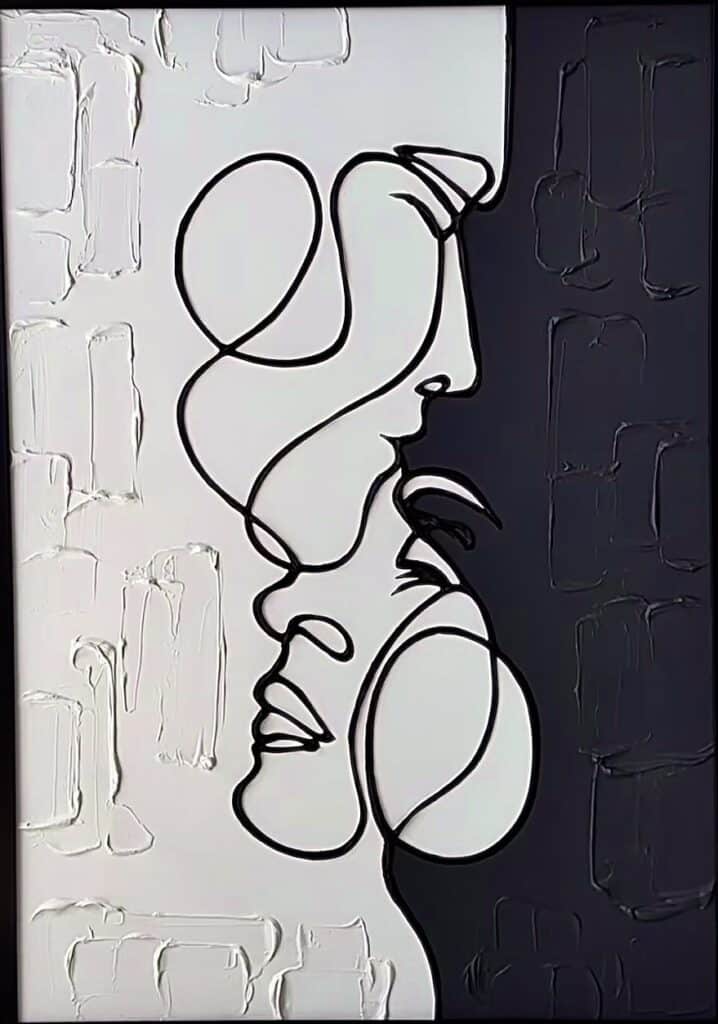
Stencil art provides endless creative possibilities without requiring advanced painting skills. Explore home DIY ideas to discover how this technique can revolutionize your interior decor. The magic lies in using cut out templates that enable you to reproduce intricate patterns consistently across your wall surface.
Start by selecting your materials carefully. Choose a base wall color that complements your existing decor and pick contrasting paint colors for your stencil design. Gather essential supplies including:
- Plastic or mylar stencil sheets
- Repositionable spray adhesive
- Foam roller or stencil brush
- Painter tape
- Acrylic or wall paint
Prepare your workspace by cleaning the wall surface and ensuring it is smooth and dry. Secure your stencil with painter tape and use a minimal amount of paint on your roller or brush. The key to crisp stencil designs is using dry brush technique which prevents paint from bleeding under the stencil edges. Apply paint in light layers using a dabbing or rolling motion rather than brushing.
Experiment with different color combinations and pattern placements. You can create geometric designs accent walls or even full room murals. Do not be afraid to mix multiple stencils or rotate them for unique visual effects. Your wall becomes a canvas waiting for your creative expression.
6. Learn Easy Embroidery for Artwork
Embroidery transforms ordinary fabric into a vibrant canvas where thread becomes your paintbrush and needle your artistic tool. This ancient craft allows beginners to create stunning visual narratives through simple stitches and colorful threads.
Embroidery techniques offer an accessible entry point for artists seeking to explore textile art. Discover how even basic stitches can communicate complex emotions and create intricate designs. For inspiration and guidance, explore our digital art tutorials to expand your creative horizons.
Beginners should start with fundamental materials and simple supplies. Your essential embroidery kit should include:
- Embroidery hoop
- Lightweight cotton fabric
- Embroidery floss in various colors
- Sharp embroidery needles
- Fabric scissors
- Transfer pencil or carbon paper
Learn three foundational stitches that will unlock numerous artistic possibilities. The backstitch creates solid lines perfect for outlines. Satin stitch fills spaces with smooth color blocks while French knots add delightful textural elements to your artwork. Practice these techniques on scrap fabric before starting your main project.
Consider creating small art pieces like decorative patches, personalized clothing accents or framed textile art. Your first projects might include simple botanical designs geometric patterns or minimalist landscape scenes. Remember that imperfection adds character embroidery is about expressing your unique creative voice through every carefully placed stitch.
7. Paint Mini Canvases for Home Decor
Transform empty walls and bland surfaces into personalized art galleries using mini canvases a delightful project that combines creativity with interior design. These small artistic treasures allow beginners to experiment without the intimidation of large scale artwork.
Mini canvas painting offers an approachable entry point for aspiring artists to develop their skills while creating meaningful home decor. Explore creative DIY decor ideas to discover how these small art pieces can dramatically enhance your living space. The beauty lies in their versatility small enough to group together or display individually.
To get started gather these essential supplies:
- Small canvas sizes (3×3 or 4×4 inches)
- Acrylic or watercolor paints
- Assorted paintbrushes
- Palette for mixing colors
- Painting easel or flat surface
- Protective covering for workspace
Begin with simple subjects that build confidence. Landscape scenes like soft mountain silhouettes minimalist geometric designs or abstract color blocks work wonderfully on mini canvases. Experiment with different painting techniques such as layering colors creating texture with brush strokes or using painter tape to make crisp geometric patterns.
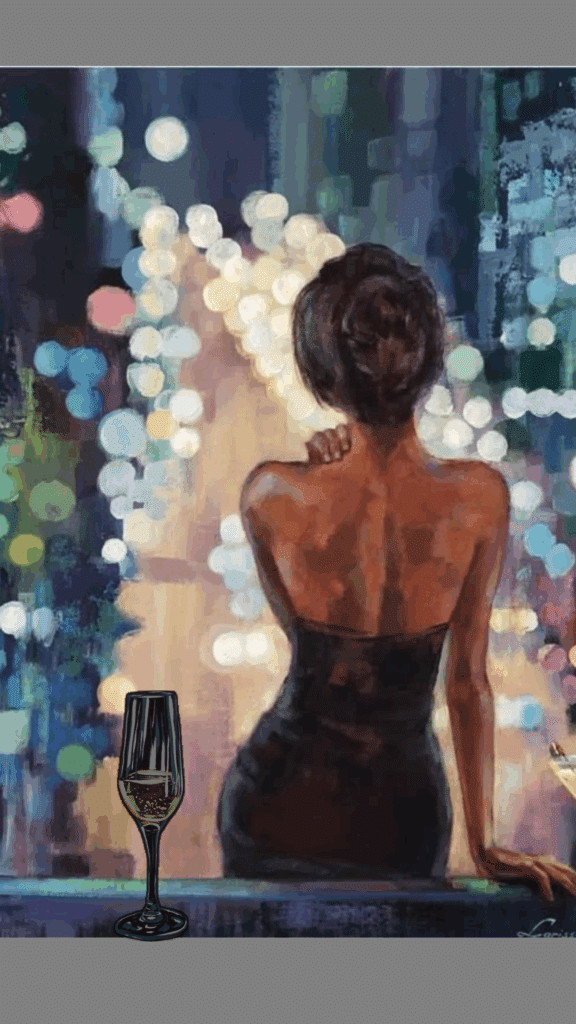

Consider creating themed collections that tell a visual story. A series of mini canvases featuring similar color palettes or complementary designs can transform an ordinary wall into a stunning focal point. Your artwork becomes a personal expression reflecting your unique aesthetic and creative journey.
Below is a comprehensive table summarizing the main techniques and strategies discussed throughout the article about various beginner art projects.
| Technique | Key Steps & Actions | Benefits/Outcomes |
|---|---|---|
| Watercolor Painting | Wet on wet to create soft edges; wet on dry for control; use dry brush for texture. | Encourages fluid expression and develops an understanding of paint behavior. |
| Acrylic Abstract Art | Understand color theory and emotional expression; use techniques like drip painting and palette knife. | Allows creative freedom and intuitive exploration with vibrant results. |
| DIY Collage | Gather recycled materials; arrange and glue; experiment with layering and tearing for texture. | Promotes environmental consciousness and personal storytelling through accessible creativity. |
| Basic Drawing | Practice shape studies; continuous line drawing; gesture sketching and perspective grids. | Builds foundational skills, enhances observation, and develops muscle memory. |
| Stenciled Wall Art | Use stencils with a dry brush technique; experiment with patterns and color placement. | Transforms walls into expression zones, adds artistic flair to living spaces. |
| Embroidery | Use backstitch, satin stitch, and French knots; practice on scrap fabric before main projects. | Creates intricate textile designs, allows for personal expression through thread. |
| Mini Canvas Painting | Experiment with simple subjects using acrylics; create themed collections of small canvas art. | Serves as enjoyable, approachable entry into home decor with personalized touches. |
Unlock Your Creative Potential with Expert Guidance
Starting new art projects can feel overwhelming especially when mastering techniques like watercolor wet on wet or exploring abstract acrylic painting. This article highlights how beginners often struggle with precision and expressiveness while seeking inspiring, manageable creative ideas that fit their pace and style. If you find yourself wanting to turn spontaneous brushstrokes into meaningful art or craft personalized decor without confusion or frustration then you are in the right place.
Discover how Art | Sky Rye Design supports your journey with clear tutorials and inspiring project ideas tailored for beginners.

Jumpstart your artistic growth now and transform your creative dreams into reality. Visit Skyrye Design and explore beginner-friendly content including fundamental drawing tips at Drawing | Sky Rye Design that nurture your skills step by step. Embrace the joy of creation and take your first confident steps toward becoming the artist you aspire to be today.
Frequently Asked Questions
What are some easy watercolor techniques for beginners?
Begin with techniques like wet on wet and wet on dry to understand how watercolors behave. Experiment with blending colors and creating sharp edges to develop your skills.
How can I create abstract art using acrylics?
Start by selecting a color palette that reflects your emotions and use techniques like drip painting or layering to express your creativity. Allow yourself to experiment without the pressure of achieving perfection.
What recycled materials can I use for DIY collage projects?
Look for old magazines, packaging materials, and fabric scraps around your home to create unique collage art. Gather these materials and start arranging them into interesting compositions before gluing them down.
What are basic drawing exercises for beginners?
Practice fundamental drawing techniques like shape studies, gesture sketching, and blind contour drawing to improve your hand-eye coordination. Dedicate at least 15 minutes each day to these exercises for consistent progress.
How do I make stenciled wall art at home?
Choose a base color for your wall and a contrasting color for your stencil design, then use a stencil brush or foam roller to apply paint. Secure the stencil and apply in light layers to achieve crisp designs without paint bleeding.
What basic stitches should I learn for embroidery?
Start with fundamental stitches such as backstitch for outlines, satin stitch for filling areas, and French knots for texture. Practice these on scrap fabric to build confidence before creating your embroidery artwork.
Recommended
- 70shares
- Facebook0
- Pinterest70
- Twitter0


